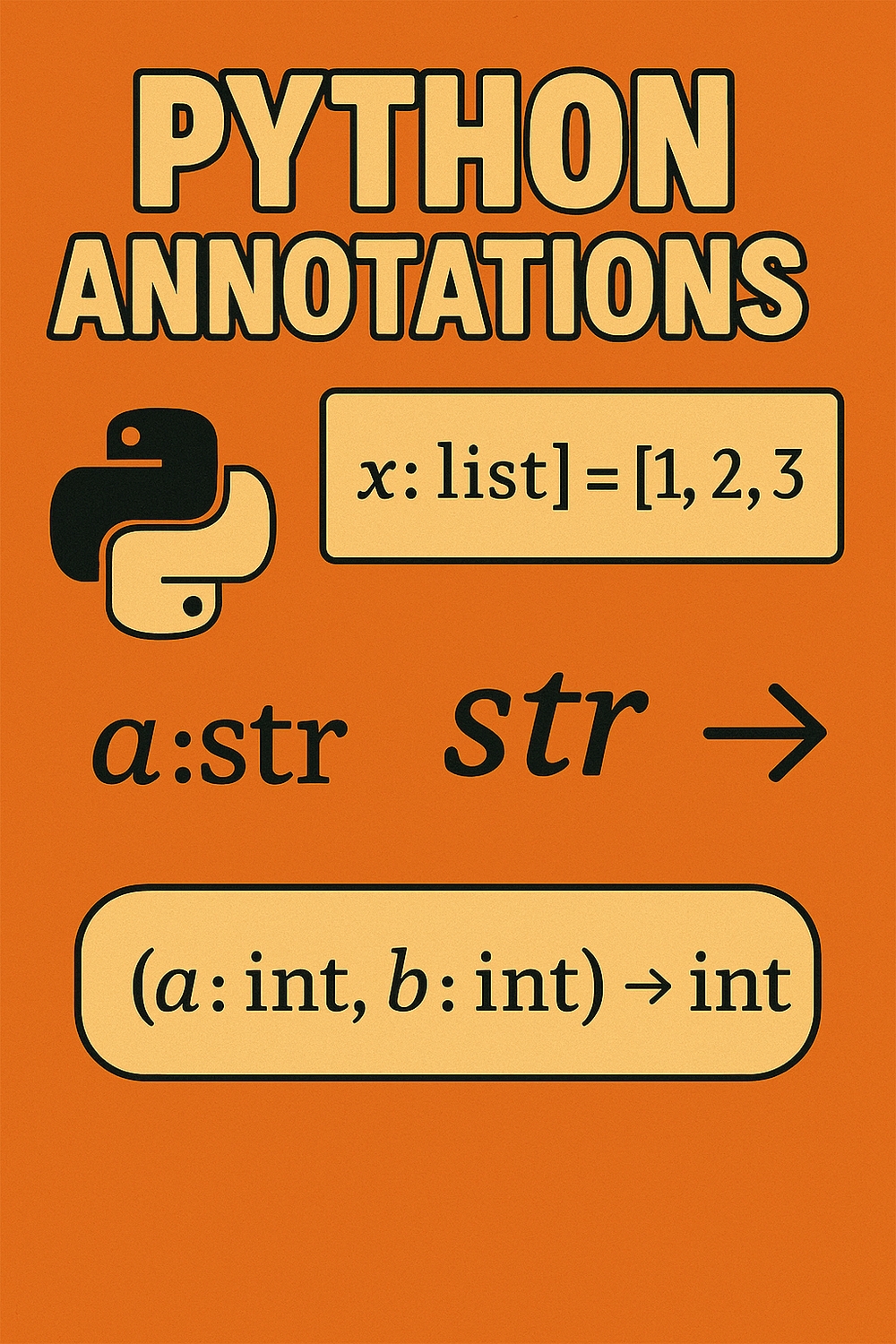Published
- 2 min read
Demystifying python's typing.Annotated

FastAPI heavily uses this advanced Python typing feature (Python 3.9+).
The Problem Annotated Solves: Standard Python type hints (param: str) are primarily for static analysis and are ignored at runtime. However, sometimes you need to attach more information (metadata) to a type hint that a library can read and act upon at runtime.
How Annotated Works: It allows you to “annotate” a type with arbitrary metadata: Annotated[Type, metadata1, metadata2, …]. Python itself ignores the metadata, but frameworks can read it.
Annotated In FastAPI’s Context: Annotated provides a clean, standardized, and explicit way to combine a parameter’s type with instructions for FastAPI.
Before Annotated (or without it): The Query(…) object acts as both a default value and FastAPI’s instruction. This can be ambiguous.
\
from fastapi import Query
# Is Query() a default value or a special instruction?
# It's a bit ambiguous.
q: str = Query(min_length=3, description="Search query string")
With Annotated (The clearer way): The parameter’s type (str) is separated from the instruction (Query(…)) for FastAPI.\
from typing import Annotated
from fastapi import Query
# Clear: 'q' is a string. The Query(...) part is *metadata*
# telling FastAPI how to handle it (source from query, validate length, add description).
q: Annotated[str, Query(min_length=3, description="Search query string")]
Another common use case: Pydantic Models (v2+): When defining data models, Annotated with Field provides a clear distinction between validation and serialization metadata.\
from typing import Annotated
from pydantic import BaseModel, Field
class User(BaseModel):
# 'name' is a string. The Field(...) is metadata for Pydantic validation.
name: Annotated[str, Field(min_length=2, max_length=50)]
age: Annotated[int, Field(gt=0, le=120)]
Conclusion: Annotated makes your code more readable and explicit by neatly separating the variable’s type from its source/validation/behavioral instructions. It’s a powerful feature that libraries leverage to provide intuitive APIs.